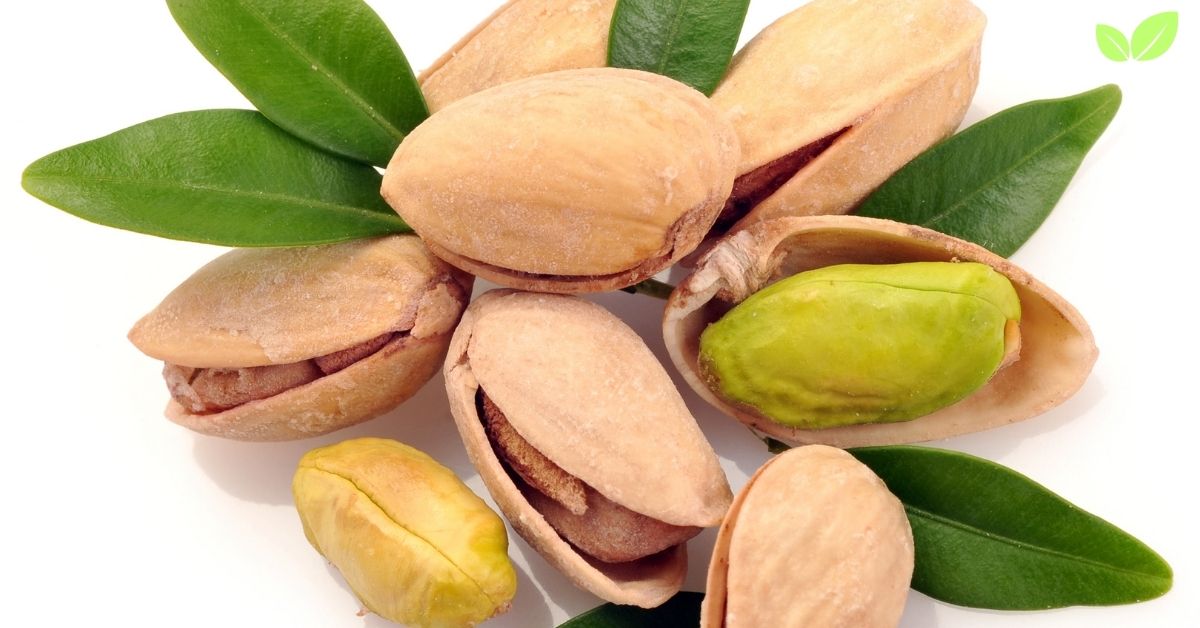Pistachio trees (Pistacia vera) are resilient, drought-tolerant plants native to arid and semi-arid regions of Central Asia and the Middle East. Known for producing the flavorful and nutrient-rich pistachio nut, these trees have a long history of cultivation, dating back thousands of years. Beyond their role in agriculture, pistachio trees occupy an important ecological niche in their native landscapes, where they contribute to soil health, support biodiversity, and provide economic benefits for communities.
As the global demand for pistachios has grown, understanding the environmental implications of its cultivation and the challenges facing sustainable production has become crucial. This article explores the environmental niche of pistachios, including their natural habitat, ecological role, agricultural practices, and the sustainability challenges associated with their production.
1. Understanding the Pistachio Tree
This tree is a member of the Anacardiaceae family, which includes cashews, mangoes, and poison ivy. Pistacia vera, the species cultivated for commercial its production, has adapted to thrive in hot, dry climates where few other crops can survive. These trees are well suited to regions with long, hot summers and mild winters, making them an ideal crop for arid and semi-arid environments.
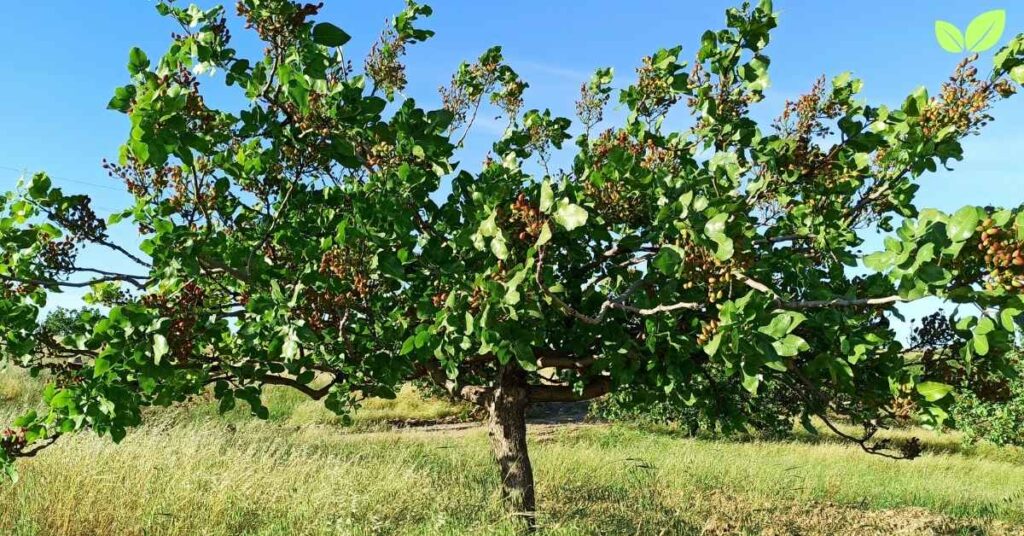
1.1. Physical Characteristics of the Pistachio Tree
- Tree Structure: These trees are medium-sized, deciduous trees that typically reach heights of 20 to 30 feet (6 to 9 meters) and have a broad, spreading canopy. The tree’s bark is grayish-brown, and it has thick, leathery leaves that help reduce water loss in dry conditions.
- Deep Root System: This tree has an extensive root system that allows it to access deep soil moisture and survive periods of drought. This deep root system also helps prevent soil erosion and promotes soil stability in arid landscapes.
- Fruit Production: It produces clusters of small, oval fruits, each containing a hard shell with a single edible seed inside. Known as the pistachio nut, this seed is encased in a thin, papery shell that splits naturally upon ripening, a characteristic that distinguishes pistachios from other nuts.
1.2. Origins and Historical Distribution
- Native Range: They are native to Central Asia and the Middle East, where they have grown wild for thousands of years in regions that are now Iran, Turkmenistan, and western Afghanistan. These areas have a climate that is well suited to its trees, with hot, dry summers and relatively mild winters.
- Domestication and Cultivation: Archaeological evidence suggests that pistachios have been cultivated since at least 7,000 BC. The tree was domesticated and spread across the Mediterranean region and eventually introduced to other arid regions, including parts of North Africa, southern Europe, and the southwestern United States.
2. Habitat and Growth Requirements of Pistachios
Pistachio trees are highly adapted to dry, desert-like conditions, allowing them to thrive where many other agricultural crops struggle. However, successful cultivation requires specific conditions for optimal growth and nut production.
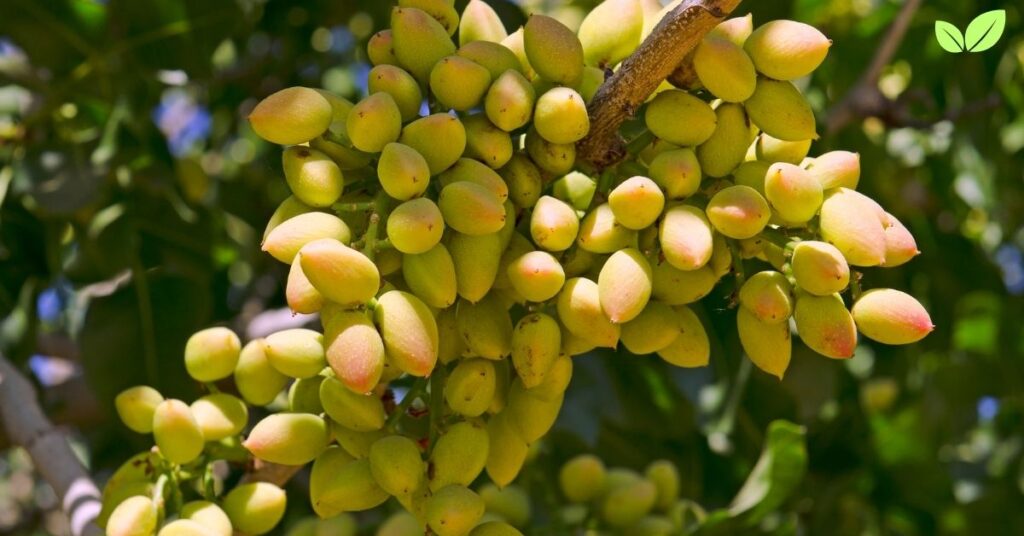
2.1. Preferred Climate Conditions
They are well suited to areas with hot summers, cool winters, and low humidity, as these conditions support nut development and prevent the spread of diseases:
- Temperature Requirements: Significant heat is required to mature and ripen properly. Ideal summer temperatures range between 86°F and 104°F (30°C and 40°C). Additionally, these trees need a certain number of chill hours (hours below 45°F or 7°C) during winter for proper flowering and fruit set, making them somewhat sensitive to mild winter conditions.
- Low Humidity: These trees are highly sensitive to high humidity, which can promote fungal infections and other diseases. For this reason, arid and semi-arid regions are ideal for pistachio cultivation, as the dry air reduces the likelihood of disease spread.
- Drought Tolerance: These trees are naturally drought-tolerant and can survive with minimal water once established. However, irrigation during the growing season is essential for achieving high yields, especially in commercial production. Pistachios use water efficiently and can tolerate brackish (salty) water better than many other crops.
2.2. Soil Preferences and Nutrient Needs
- Soil Type: It thrives in well-draining, sandy, or loamy soils. They are tolerant of soils with high salinity, a quality that makes them suited to marginal lands where salinity can be a limiting factor for other crops.
- Nutrient Needs: Like all plants, these trees require essential nutrients, including nitrogen, phosphorus, and potassium, to support growth and nut production. Fertilization practices in commercial orchards are often tailored to meet these needs while minimizing environmental impacts.
- pH Tolerance: Pistachios prefer slightly alkaline soils with a pH between 7 and 8.5, which aligns well with the soil conditions found in arid regions.
3. Ecological Role of Pistachios in Their Native Habitat
In their native environments, wild trees play a significant role in supporting biodiversity, stabilizing soils, and contributing to the resilience of desert ecosystems.
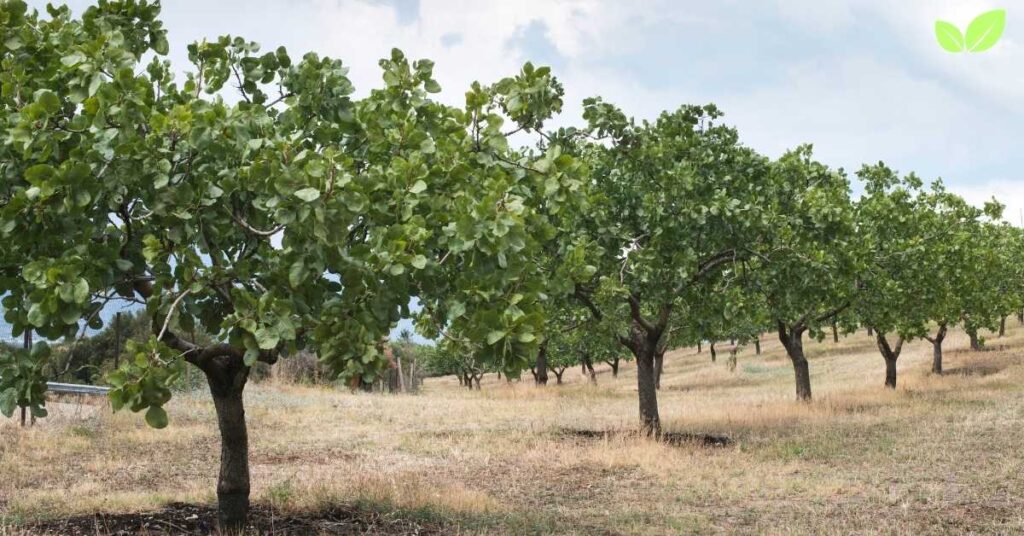
3.1. Supporting Biodiversity
- Habitat for Wildlife: Wild trees provide shelter and food for various desert-adapted wildlife, including birds, small mammals, and insects. The trees’ foliage offers shade and refuge from the harsh desert sun, while the fruits provide a valuable food source.
- Pollinator Support: Although these are wind-pollinated, their flowers attract various insects that visit them out of curiosity, which can indirectly benefit other flowering plants in the vicinity. This creates a more diverse pollinator population in arid ecosystems.
- Genetic Diversity: Wild pistachio populations possess genetic diversity that is critical for the species’ resilience to environmental changes. These populations serve as a genetic reservoir for breeding programs, which can help develop pest-resistant and climate-resilient pistachio cultivars.
3.2. Soil Stabilization and Carbon Sequestration
- Preventing Erosion: It has deep and spreading root systems that help stabilize soil in arid and semi-arid landscapes, reducing erosion caused by wind and water. This is particularly important in desert regions where soil erosion can degrade land quality.
- Carbon Storage: Pistachio trees contribute to carbon sequestration, storing carbon in their woody tissues and reducing atmospheric carbon dioxide levels. Although they are not as efficient as large forests in capturing carbon, these orchards can contribute to climate mitigation efforts when managed sustainably.
4. Pistachio Cultivation Practices and Environmental Impacts
As the demand for these has grown worldwide, large-scale commercial orchards have expanded in areas such as California, Iran, and Turkey. While pistachio cultivation offers economic benefits, it also presents environmental challenges that must be addressed for sustainable production.
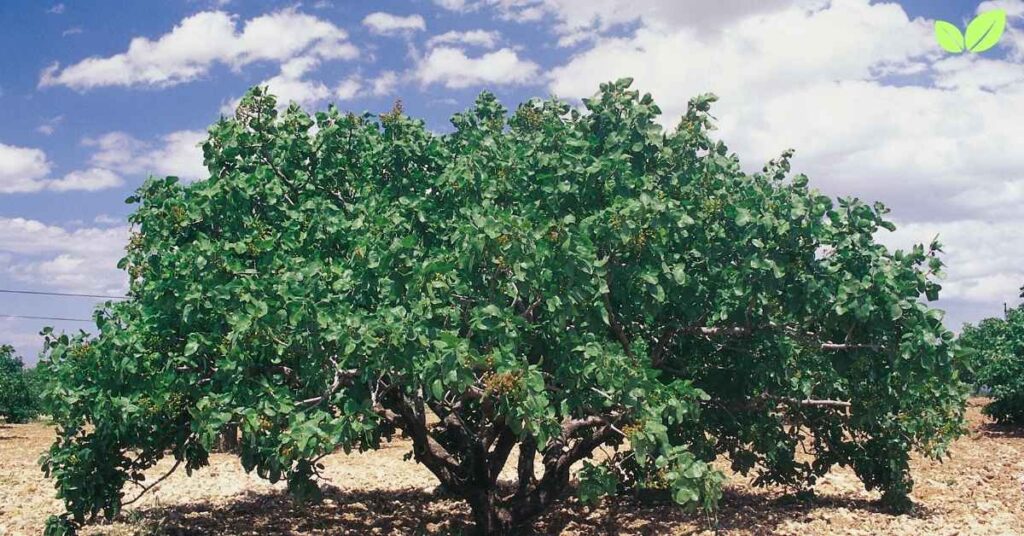
4.1. Water Use and Irrigation Practices
- Water Efficiency: Pistachios are drought-tolerant, but achieving high yields requires supplemental irrigation, especially in commercial orchards. In water-scarce regions like California, where production has become significant, water use is a critical factor in sustainability.
- Efficient Irrigation Methods: Many commercial growers employ efficient irrigation techniques, such as drip irrigation, to reduce water waste and ensure that water reaches the tree roots. These systems minimize evaporation losses and can improve water-use efficiency by up to 40% compared to traditional methods.
- Managing Salinity: These trees are relatively salt-tolerant, which allows them to be irrigated with water sources that have higher salinity levels. However, excessive salinity can still harm soil health over time, so careful management and soil monitoring are essential in regions with saline irrigation water.
4.2. Pesticide and Fertilizer Use
- Pesticide Application: Pest pressures in orchards can lead to the use of chemical pesticides, which, if mismanaged, can harm beneficial insects, contaminate water sources, and reduce biodiversity. Integrated Pest Management (IPM) practices, which include biological control methods, are increasingly used to reduce pesticide reliance.
- Fertilization and Soil Health: Fertilizers are used to meet the nutrient demands of these trees, but excessive application can lead to nutrient runoff, soil degradation, and water pollution. Sustainable fertilization practices, including soil testing, organic amendments, and precision application, are essential to maintain soil health and minimize environmental impacts.
4.3. Land Use and Habitat Conversion
- Habitat Loss: In some regions, pistachio cultivation has led to the conversion of native habitats, which can negatively affect local wildlife and biodiversity. In places like Iran and Turkey, where wild pistachio populations still exist, careful land management is required to balance agricultural expansion with conservation needs.
- Soil Degradation: Large-scale monoculture pistachio orchards can lead to soil degradation if not managed with sustainable practices. Continuous cultivation without crop rotation or soil-restoring practices can result in nutrient depletion and reduced soil health over time.
5. The Economic and Social Impact of Pistachio Cultivation
Industry plays a significant role in the economies of major producing countries, providing livelihoods, supporting rural communities, and contributing to export revenue.
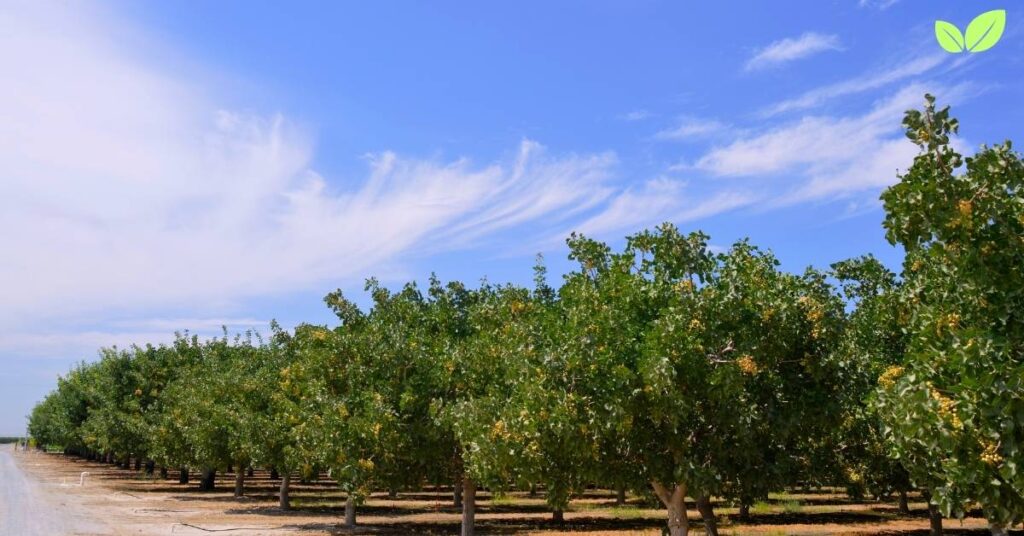
5.1. Global Demand and Economic Importance
- Major Producing Countries: The top pistachio-producing countries include Iran, the United States (particularly California), Turkey, and Syria. These countries account for the vast majority of global production, with California alone supplying approximately 40% of the world’s pistachios.
- Economic Value: They are a high-value crop, with significant demand in international markets due to their flavor, health benefits, and culinary uses. Exporting pistachios generates valuable revenue for producing countries, supporting economies and creating employment opportunities.
- Local Employment and Rural Development: Pistachio cultivation provides jobs in rural areas, particularly in harvesting, processing, and packaging. In some regions, the industry supports entire communities, fostering rural development and improving livelihoods.
5.2. Cultural and Culinary Significance
- Cultural Heritage: In countries like Iran and Turkey, they have been a part of the cultural and culinary heritage for centuries. They are used in traditional dishes, sweets, and celebrations, reflecting their cultural significance.
- Health Benefits: Pistachios are rich in protein, fiber, healthy fats, vitamins, and minerals, making them a popular choice among health-conscious consumers. The high nutrient density of pistachios supports human health, adding to their appeal and market demand.
6. Sustainability Challenges and Conservation Efforts
The expansion of the pistachio industry brings with it sustainability challenges that must be addressed to ensure the long-term viability of pistachio production and minimize environmental impacts.
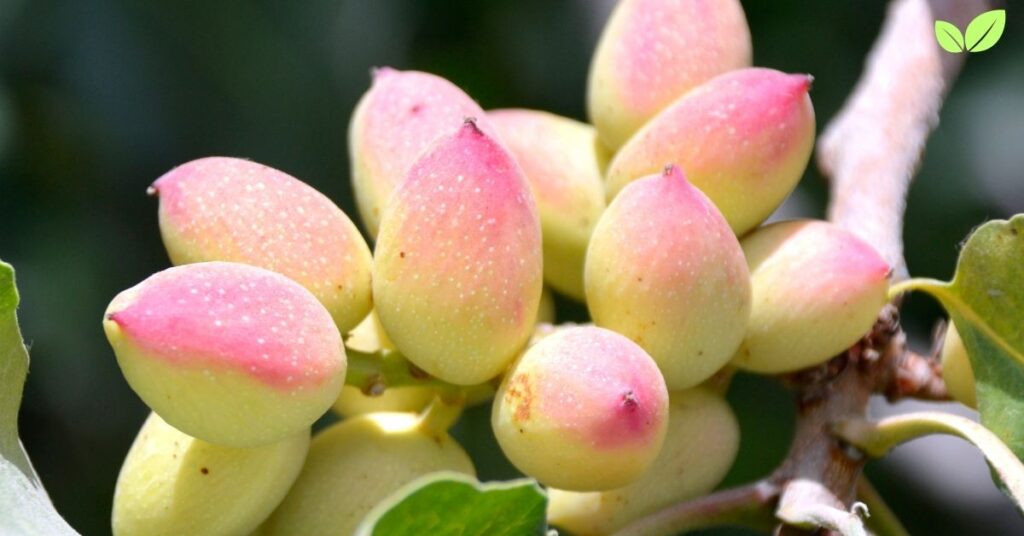
6.1. Climate Change and Water Scarcity
- Impact of Climate Change: Climate change poses a significant threat to pistachio cultivation, particularly in regions like California that face increasing temperatures, water scarcity, and unpredictable weather patterns. Higher temperatures and prolonged droughts can stress pistachio trees, reducing yield and quality.
- Water Conservation Strategies: To address water scarcity, researchers and growers are exploring water conservation strategies, such as drought-resistant rootstocks, improved irrigation technology, and soil moisture monitoring. These practices can help reduce water use and adapt to changing climatic conditions.
6.2. Conservation of Wild Pistachio Populations
- Genetic Diversity Conservation: Protecting wild pistachio populations is essential for maintaining genetic diversity, which can be valuable for breeding new, resilient cultivars. Wild populations provide a genetic reservoir that may hold traits for disease resistance, drought tolerance, and adaptability to climate change.
- Habitat Protection: Efforts to protect the natural habitats of wild pistachios are crucial for conservation. Sustainable land management practices, habitat restoration, and protected areas can help ensure the survival of wild pistachio species and preserve their ecological role in arid landscapes.
6.3. Sustainable Agriculture Practices
- Promoting Agroforestry: Integrating pistachios into agroforestry systems, where trees are grown alongside other crops, can improve soil health, reduce erosion, and enhance biodiversity. Agroforestry practices can create more resilient agricultural landscapes and provide additional income sources for farmers.
- Organic and Regenerative Farming: Some producers are adopting organic and regenerative farming practices for pistachio cultivation. These practices minimize chemical inputs, improve soil health, and promote biodiversity, making pistachio production more environmentally sustainable.
Conclusion
This tree, with its resilience to arid conditions and high economic value, plays an important role in agriculture and ecology. While pistachios are a valuable crop for dryland farming, they also present environmental challenges that need to be addressed to ensure sustainable production. From supporting biodiversity in arid landscapes to contributing to rural economies, the pistachio has a multifaceted impact that extends beyond the orchard.
Addressing the sustainability challenges of water use, habitat loss, and soil health is critical for the long-term viability of cultivation. By adopting sustainable practices, conserving wild populations, and promoting research on climate-resilient varieties, the pistachio industry can continue to thrive while minimizing its ecological footprint. As demand for pistachios grows, balancing economic benefits with environmental stewardship will be essential to preserving the pistachio’s place in the world’s agricultural and natural landscapes.
Read More: Euphorbia lactea: A Comprehensive Exploration of Its Environmental Niche

